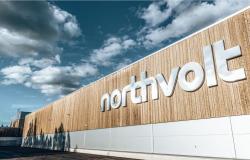
The number of deaths will exceed that of births in Quebec from 2027, according to the demographic update from the Institute of Statistics of Quebec (ISQ) published Monday. Despite this, the need for new housing will continue to grow by hundreds of thousands in the coming decades due to increased immigration and a Quebec population that could reach 10 million in 20 years.
Like many Western countries, the natural increase in Quebec’s population will plateau within three years, estimates the ISQ. It has already been negative for several years in Bas-Saint-Laurent, Gaspésie–Îles-de-la-Madeleine, Mauricie and more recently in Saguenay–Lac-Saint-Jean.
With more deaths than births, the increase in population will then be based exclusively on immigration throughout Quebec.
Since the last comprehensive update of the ISQ five years ago, the uncertainty around its demographic curves has continued to increase, observes for The Duty the statistician Frédéric Fleury-Payeur. The hypothesis went from 55,000 to 65,000 newcomers who settle in Quebec each year. “This is not a recommendation. This is our interpretation of the current context. And that shows us where it takes us,” he explains. “ […] By having even fewer children per woman and having slightly lower immigration, the population of Quebec could decline. It’s entirely plausible. »
The “regionalization of immigration” is one of the other changes of direction between the two recent ISQ studies, that of 2019 and that of 2024. The explosion of temporary workers in the four corners of Quebec has modified the perspectives .
The Quebec metropolitan region wins in this regard. The ISQ now believes that, by 2041, the greater Capitale-Nationale region will increase by 17% more than expected, or 149,000 new inhabitants.
In contrast, the island of Montreal is attracting fewer and fewer immigrants and should experience a much smaller increase than anticipated. The Montreal census region is the only one that has undergone a downward revision (– 3%, – 161,000 inhabitants).
Future explosion in demand for “collective housing”
The aging of the population has reached a milestone this year. The cohort of over 65s now exceeds that of 0-19 year olds.
In the wake of this collective aging, seniors over 85 are expected to triple in number within a few decades. The ISQ predicts that they will increase from 209,000 to 583,000 between 2021 and 2071. Most of this increase will be observable by 2039.
Being a centenarian will become more and more common. There should be around 18,500 Quebecers over the age of 100 in 2071, compared to around 2,300 in 2021.
To accommodate all these people, “collective housing” will become essential. The ISQ predicts that 177,100 new people will need accommodation in an RPA and a CHSLD by 2051.
To accommodate all new Quebecers, private housing is not left out. The number of private households in Quebec could increase from 3.8 million in 2021 to 4.7 million in 2071, an increase of more than 940,000 households.
These demographic growth prospects were previously carried out every five years by the ISQ. The institute now plans to update its projections annually. “The demographic future of Quebec is, more than ever, in constant redefinition,” explains the chief statistician, Simon Bergeron, in his report.
This report is supported by the Local Journalism Initiative, funded by the Government of Canada.
To watch on video
#Canada





